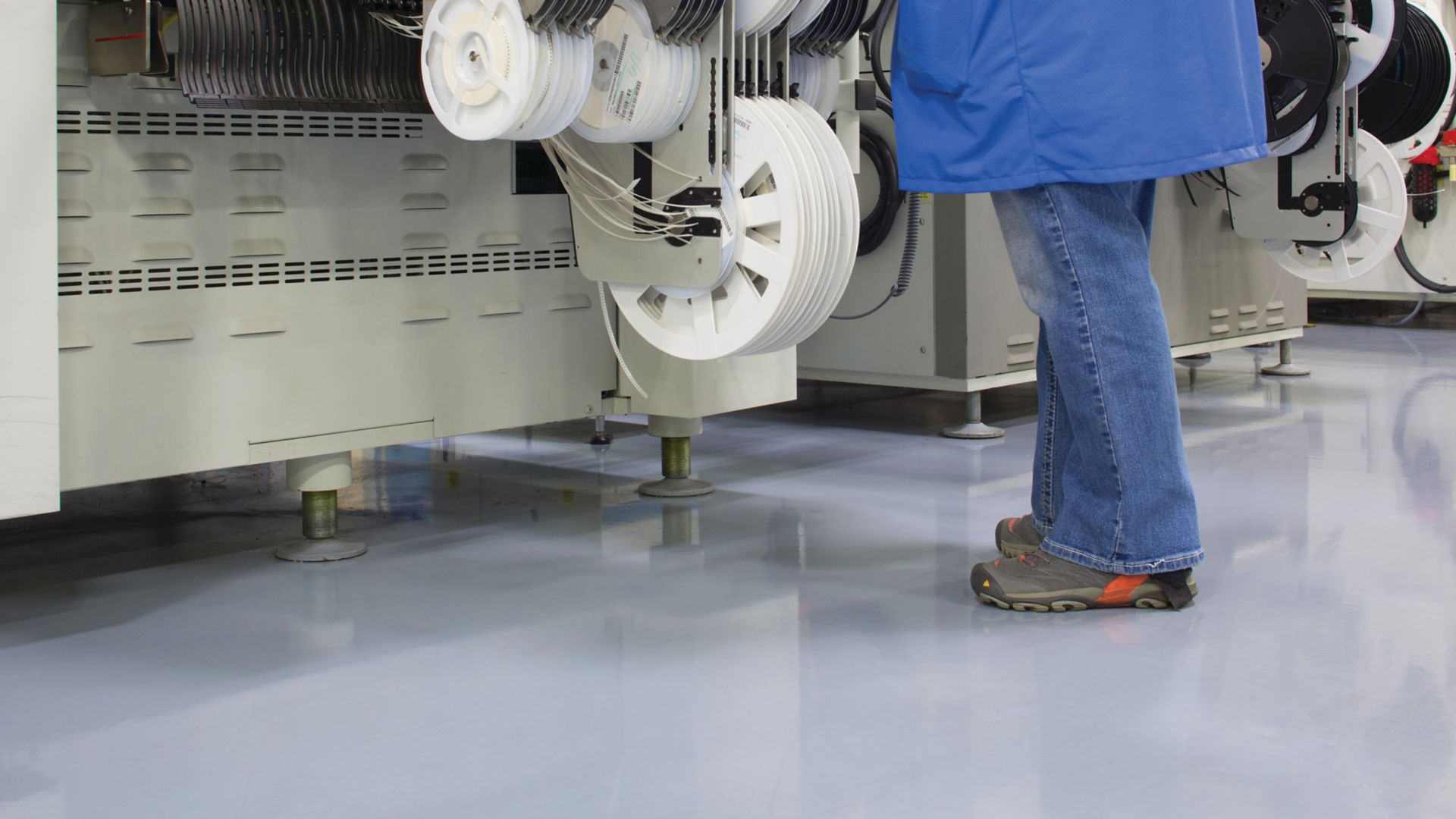Electrostatic discharge (ESD) flooring is essential in environments where static electricity can damage sensitive electronic components or ignite flammable substances. Sika’s ESD flooring systems are specially designed to safely control and dissipate static charges, offering reliable protection for personnel, equipment, and products. Ideal for use in electronics manufacturing, cleanrooms, data centres, and pharmaceutical facilities, our solutions provide seamless, durable surfaces that meet stringent conductivity standards and industry regulations. With high chemical resistance, long term performance, and easy maintenance, Sika’s ESD floors help safeguard critical operations and maintain a safe, static free environment.
What is ESD?
Electrostatic discharge (ESD) is the sudden flow of electricity between two electrically charged objects, often caused by contact or friction. This invisible transfer of static electricity can damage sensitive electronic components, ignite flammable substances, or disrupt operations in critical environments. ESD control is essential in industries such as electronics, pharmaceuticals, and data centres to ensure safety, protect equipment, and maintain process integrity.
Does My Project Need an ESD floor?
If your facility works with static sensitive electronics, explosive materials, or processes where electrostatic discharge could cause disruption, an ESD flooring system is a crucial investment. Even with proper handling procedures in place, static events can still occur, leading to costly damage, safety hazards, and downtime. Sikafloor® ESD (Electrostatic Discharge) and Sikafloor® ECF (Electrically Conductive Flooring) systems are designed to safeguard your entire process. These advanced systems can be tailored to meet the specific demands of your environment, ensuring effective static control and long-term protection for both people and equipment.
Guide to Choosing ESD Flooring
Selecting the right ESD flooring system depends on how electrostatic discharge will be managed in the facility. If personnel are grounded via wrist straps, the flooring needs only to meet a resistance to ground below 10⁹ Ohm. However, if the flooring itself is used to ground personnel through contact with ESD footwear, the system must meet stricter criteria to achieve both a resistance below 10⁹ Ohm and limit body voltage to under 100 V.
The decision of selecting flooring materials should align with the safety standards, operational processes, and environmental conditions of each specific project.

